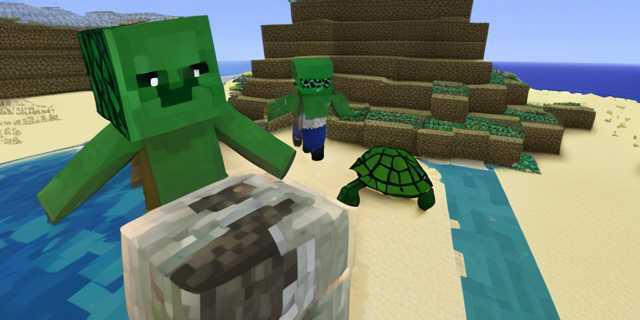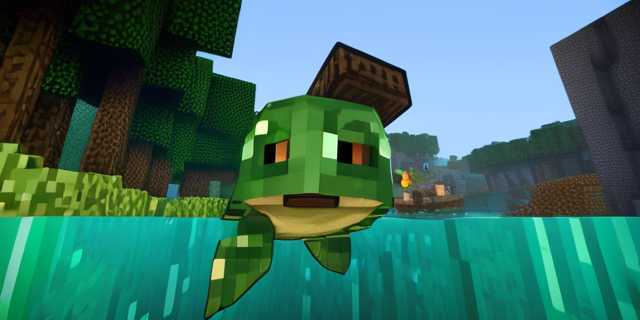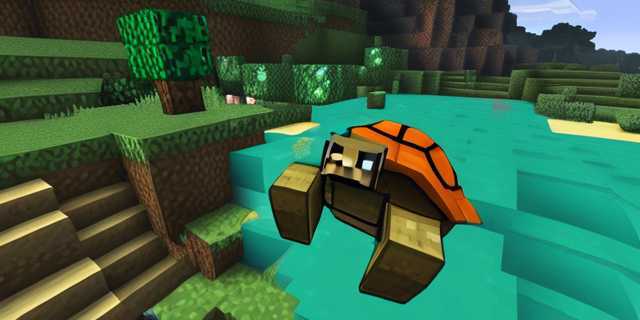Everything You Should Know About Turtles in Minecraft

Turtles are one of the fascinating passive mobs in Minecraft, known for their serene presence and unique gameplay mechanics. Introduced in version 1.13, the “Update Aquatic,” these reptiles have become an integral part of the game’s ecosystem. Turtles can be found in the Overworld, typically on warm beaches, where they spawn naturally. They are often seen basking on the sand or swimming in the shallow waters near the shore. These gentle creatures play a significant role in the game’s lore and mechanics, offering players a unique experience when interacting with them. Understanding turtles in Minecraft involves learning about their spawning, breeding, and the items they drop, which can be used for crafting various items, including the coveted Turtle Shell helmet.
Turtles’ Habitat and Behavior

In Minecraft, turtles are primarily found on warm beaches, making these biomes the best places to encounter them. Unlike other mobs, turtles do not despawn, meaning once they appear, they will remain in that area unless disturbed or moved. They are diurnal creatures, actively roaming and swimming during the day and returning to the beaches at night. Turtles in Minecraft are known for their distinctive behavior of returning to their home beach to lay eggs, a unique feature that mirrors real-life turtle behavior. This homing instinct is crucial for players to understand, especially when breeding turtles, as the eggs can only be laid on the beach where the turtle originally spawned. Players can exploit this behavior by leading turtles to a desired location using seagrass, their favorite food.
Breeding and Hatching Turtles

Breeding turtles in Minecraft is a fascinating process that requires patience and understanding of their unique mechanics. To breed turtles, players need to feed two adult turtles seagrass, which can be harvested from underwater sources using shears. Once fed, the turtles enter love mode, and one of them will eventually find a suitable spot on the beach to lay eggs. The turtle will dig into the sand and lay up to four eggs, which will slowly develop into hatchlings over time. It’s essential to protect these eggs from hostile mobs, as they can be trampled and destroyed, causing a setback in your turtle farming efforts. The eggs hatch in about four in-game days, with the baby turtles, or hatchlings, being incredibly small. As they grow, they drop scutes, a valuable item used to craft the Turtle Shell helmet, offering unique underwater breathing benefits.
Uses of Turtles and Turtle Shells

Turtles in Minecraft offer more than just aesthetic appeal; they provide valuable resources that can enhance gameplay. One of the most sought-after items obtained from turtles is the Turtle Shell helmet. Crafted from five scutes, this helmet not only offers decent armor protection but also provides the wearer with the “Water Breathing” status effect, allowing players to stay underwater for longer periods. This feature is incredibly useful when exploring ocean biomes, hunting for treasures, or engaging in underwater building projects. Additionally, players can brew a Potion of the Turtle Master using a Turtle Shell, which grants resistance and slowness, making it a strategic item for specific combat situations. The versatility of turtle-related items makes these creatures a valuable asset in any Minecraft world.
Conservation and Ethical Considerations

While interacting with turtles in Minecraft can be a fun and rewarding experience, it’s important to consider the ethical implications of farming and harvesting them. As with any mob in the game, respecting their habitat and ensuring their preservation can enhance the overall gameplay experience. Players should be mindful of not overharvesting seagrass or turtle eggs and consider creating sustainable farming practices to ensure a steady supply of resources without depleting the population. Protecting turtle eggs from predators and ensuring a safe environment for hatchlings to grow can also add an extra layer of challenge and satisfaction to the game. By approaching turtle farming responsibly, players can enjoy the benefits of these unique mobs while contributing positively to their Minecraft ecosystem.
Conclusion
Turtles in Minecraft are a captivating addition to the game’s diverse world, offering players a chance to engage with a unique mob that mirrors real-world wildlife. From their tranquil presence on warm beaches to the valuable resources they provide, turtles bring a new level of depth to the game’s mechanics and lore. Whether you’re breeding them for scutes, crafting a Turtle Shell helmet, or simply enjoying their serene company, understanding the intricacies of turtle behavior and habitat can enhance your Minecraft experience. Remember to approach your interactions with these creatures with care and consideration, ensuring a balanced and sustainable gameplay environment. With the right knowledge and approach, turtles can become a cherished part of your Minecraft adventures, offering both practical benefits and aesthetic enjoyment.